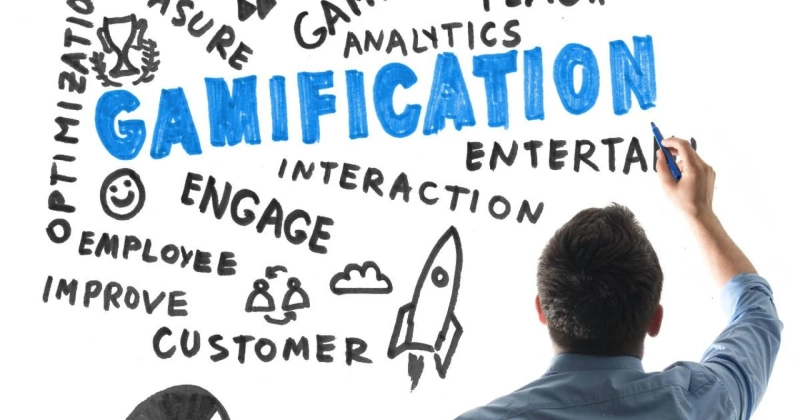Companies are constantly seeking new ways to motivate and engage their employees. One approach that has gained significant traction in recent years is gamification – the integration of game-like elements into non-game contexts, such as the workplace. By tapping into the natural human desire for competition, achievement, and recognition, gamification has the potential to transform employee recognition programs and drive increased productivity, engagement, and job satisfaction.
The Power of Play
At its core, gamification leverages the principles of game design to make tasks and challenges more engaging and rewarding. By introducing elements such as points, badges, leaderboards, and trophies, companies can turn everyday work activities into captivating experiences that tap into employees' intrinsic motivations and competitive spirit.
One of the key benefits of gamification is its ability to foster a sense of achievement and recognition. When employees are acknowledged for their accomplishments through tangible rewards, such as digital badges or physical trophies, they feel valued and motivated to continue excelling in their roles.
Boosting Engagement and Loyalty
Gamification not only incentivizes employees to perform better but also fosters a more engaging and enjoyable work environment. By introducing elements of fun and friendly competition, gamified recognition programs can help alleviate workplace monotony and boost employee morale.
Moreover, gamification can contribute to increased employee loyalty and retention. When employees feel recognized and appreciated for their hard work, they are more likely to develop a stronger sense of attachment to their organization, reducing the likelihood of them seeking employment elsewhere.
Tailoring the Experience
One of gamification's strengths is its flexibility and ability to cater to different employee preferences and motivations. Some individuals may be driven by the prospect of earning points or climbing leaderboards, while others may find greater satisfaction in unlocking achievements or receiving personalized badges.
Successful gamification strategies often involve offering a diverse range of rewards and recognition elements, allowing employees to engage with the system in a manner that resonates with their individual preferences and goals.
Measuring Success and Continuous Improvement
Gamification platforms typically provide robust analytics and reporting capabilities, allowing companies to track employee participation, engagement levels, and the impact of specific gamification elements. This data-driven approach enables organizations to continuously refine and optimize their gamification strategies, ensuring they remain relevant and effective over time.
Moreover, by analyzing employee performance data in conjunction with gamification metrics, companies can identify areas for improvement and tailor their recognition programs to better align with business objectives and desired outcomes.
Fostering a Culture of Collaboration and Friendly Competition
While gamification can introduce a healthy dose of competition into the workplace, it can also promote collaboration and teamwork. Many gamification platforms incorporate team-based challenges and rewards, encouraging employees to work together towards shared goals while maintaining a sense of friendly rivalry.
This balance between individual and team-based recognition can foster a supportive and inclusive workplace culture where employees feel motivated to contribute to the success of their colleagues and the organization as a whole.
Overcoming Challenges and Maintaining Engagement
Like any new initiative, implementing a successful gamification strategy may present certain challenges. One potential pitfall is the risk of employees perceiving the program as too gimmicky or superficial, leading to disengagement over time.
To mitigate this, it's crucial to ensure that the gamification elements are closely tied to meaningful work objectives and that the rewards and recognition offered hold genuine value for employees. Additionally, regularly refreshing and updating the gamification elements can help maintain a sense of novelty and prevent stagnation.
Another challenge is ensuring fairness and transparency within the gamification system. Clear communication of rules, scoring criteria, and reward structures is essential to maintaining employee trust and avoiding perceptions of bias or unfair treatment.
The Future of Employee Recognition
As technology continues to advance and the workforce evolves, gamification is poised to play an increasingly prominent role in employee recognition strategies. The integration of emerging technologies, such as virtual reality, augmented reality, and artificial intelligence, could further enhance the gamification experience, offering new and immersive ways for employees to engage with recognition programs.
Additionally, the rise of remote and hybrid work environments has highlighted the importance of fostering a sense of community and engagement among dispersed teams. Gamification could serve as a powerful tool for bridging geographic distances and cultivating a shared sense of purpose and camaraderie among employees, regardless of their physical location.
Conclusion
Gamification represents a powerful and innovative approach to employee recognition. It leverages the natural human desire for achievement, competition, and recognition to drive increased engagement, productivity, and loyalty. By thoughtfully integrating game-like elements into recognition programs, companies can create a more enjoyable and rewarding work environment, foster a culture of collaboration and friendly competition, and ultimately position themselves for long-term success in an ever-evolving business landscape.


